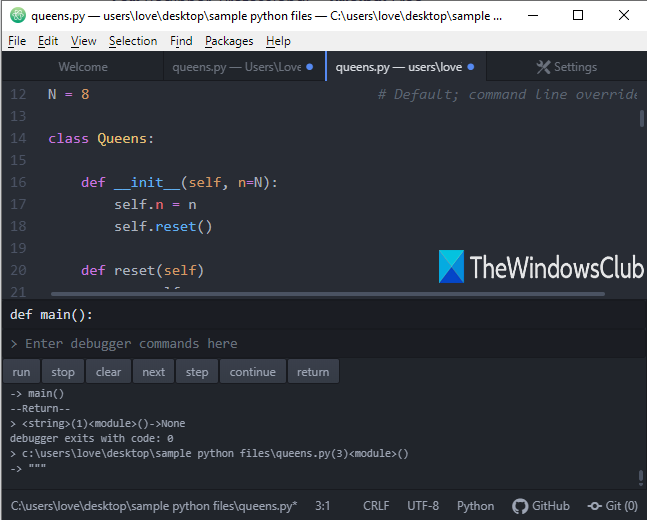Introduction
Python-Markdown is a packagethat converts content in Markdown format to HTML. In this example, we will look at how to convert Markdown to HTML and automatically generate a table-of-contents.We will also look at using the command-line tool to convert content.We will also cover how to use fenced code blocks and
- Feb 24, 2021 import markdown html = markdown. Markdown (yourtextstring) For more advanced installation and usage documentation, see the docs/ directory of the distribution or the project website at.
- This works with GitHub (and should work anywhere else your Markdown is rendered to HTML) but is less readable when presented as raw text/Markdown. Images If your requirements are especially unusual, you can always just inline an image.
I've set up a repository on github to hold all of the items specifically related to this markdown.py project. Feel free to follow along there as well as. Here’s an example of Python code without syntax highlighting.

Setup
Github Markdown Guide
Install the markdown library with pip. I am using Python 3.8 in this example.
Convert Markdown to HTML in Python
Elka-elektronik driver download for windows. The easiest way to convert is just use a string for input and a string for output.
To use files for input and output instead:
Convert Markdown to HTML with command-line tool
The Python-Markdown CLI tool is convenient whenyou just want to convert a document without embedding the code in a larger application.
The easiest way to invoke it by running is a module with python -m. For example:
Generate a table of contents (TOC)
To generate a TOC, we need to using the toc extension. There are a number of other extensions availablewith the package that you can check out at https://python-markdown.github.io/extensions/.
You convert the same way before, except this time you pass in an extra parameter to include the extension Download digital check driver.
To customize options, you need to include the markdown.extensions.toc.TocExtension classand pass an instance of that object to the extensions parameter. See the following example.Read more at https://python-markdown.github.io/extensions/toc/#usage
In your Markdown, add [TOC] to the Markdown where the TOC should go.
Fenced code blocks
To make a code block you can indent all lines by 4 spaces by default.Personally, I prefer using the three backticks (```) to enclose code without indenting.It also gives a place to define which language is being used.
To use the triple backticks you need to enable the fenced_code extension.This extensions already comes with Python-Markdown.This will wrap the code block with a <pre> and <code> tag.
TIP: If you need to write a triple backtick code block within your Markdown code, you can wrap the outermostcodeblock with additional backticks. For example, use a set of 4 or 5 instead of 3 like this:
Source code syntax highlighting
To build on the previous section using fenced_code, you can add syntax highlightingwith the codehilite extension. This extensions already comes with Python-Markdown, butit depends on another Python library named Pygments.

Install pygments with pip:
Here is an example of generating HTML with both fenced_code and codehilite extensions together.
When you add the codehilite extension,the code block is wrapped with the class .codehilite and many other styles will be applied.You could write your own styles, but Pygments comes with several style sets you can use.You can generate the different styles using a command-line tool called pygmentize.Use this tool to list available color themes and to generate the styles.Save the CSS output to a .css file and link it in your HTML like normal.
To apply the proper styles, you must generate the CSS and apply it.
Github Markdown Warning
In the HTML:
Conclusion
After reading this, you should understand how to convert Markdown contentto HTML and how to automatically generate a table-of-contents.You should be able to use strings or files for conversion.You should also understand how to use the CLI tool to convert content.You should also know how to include extensions and apply fenced code blocks and source code syntax highlithing with Pygments.
Github Markdown Code
References
